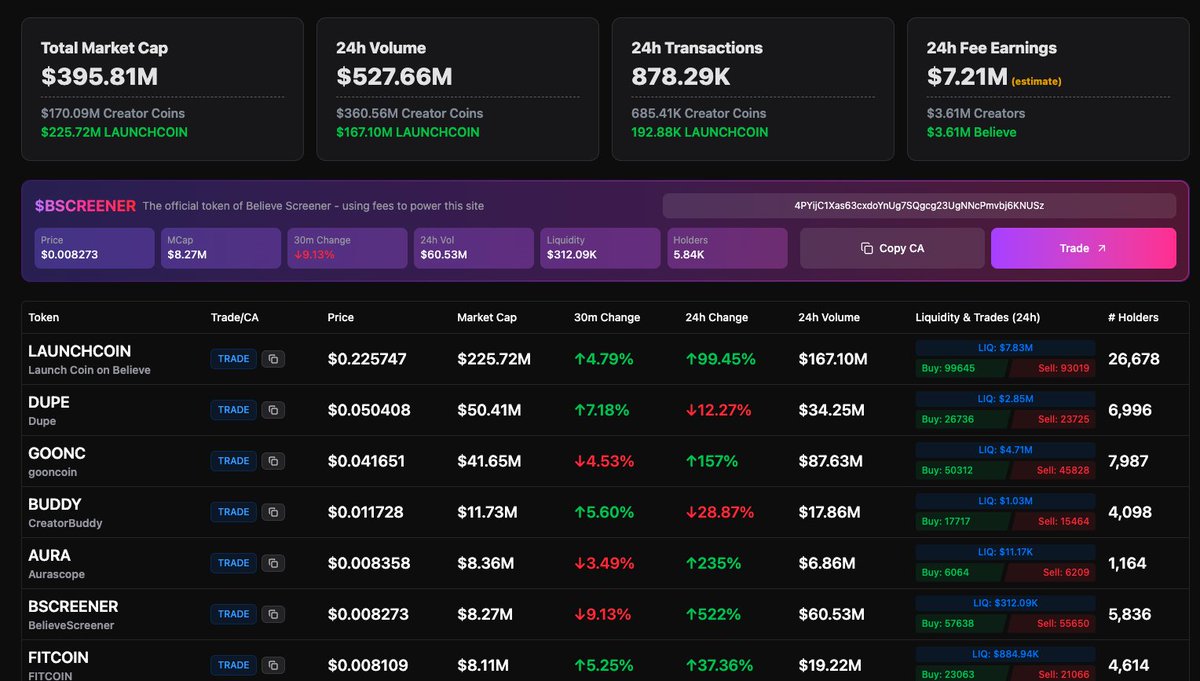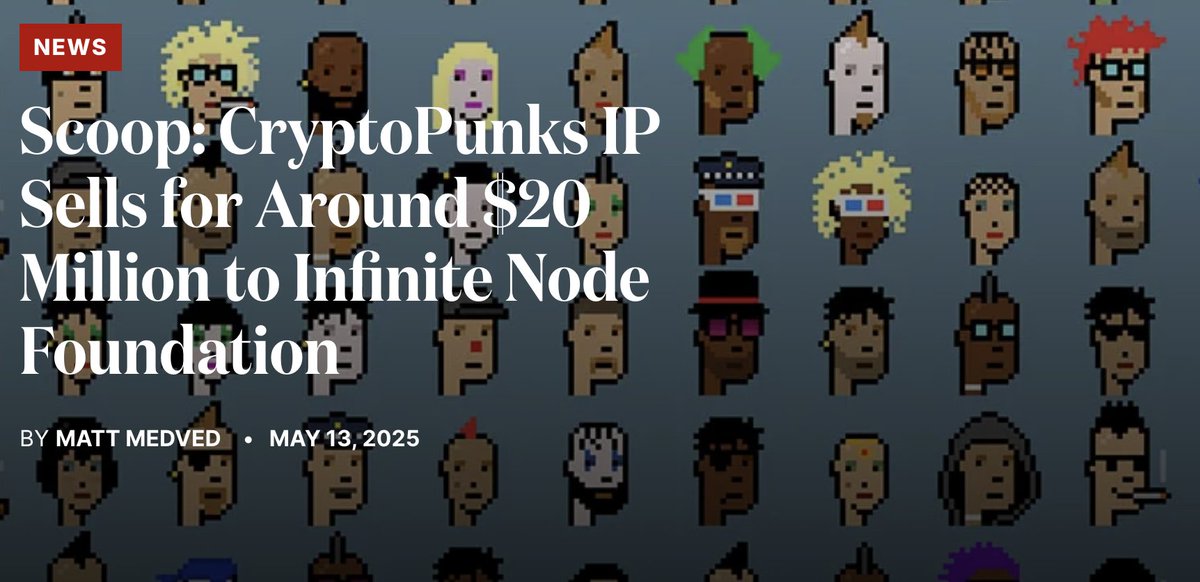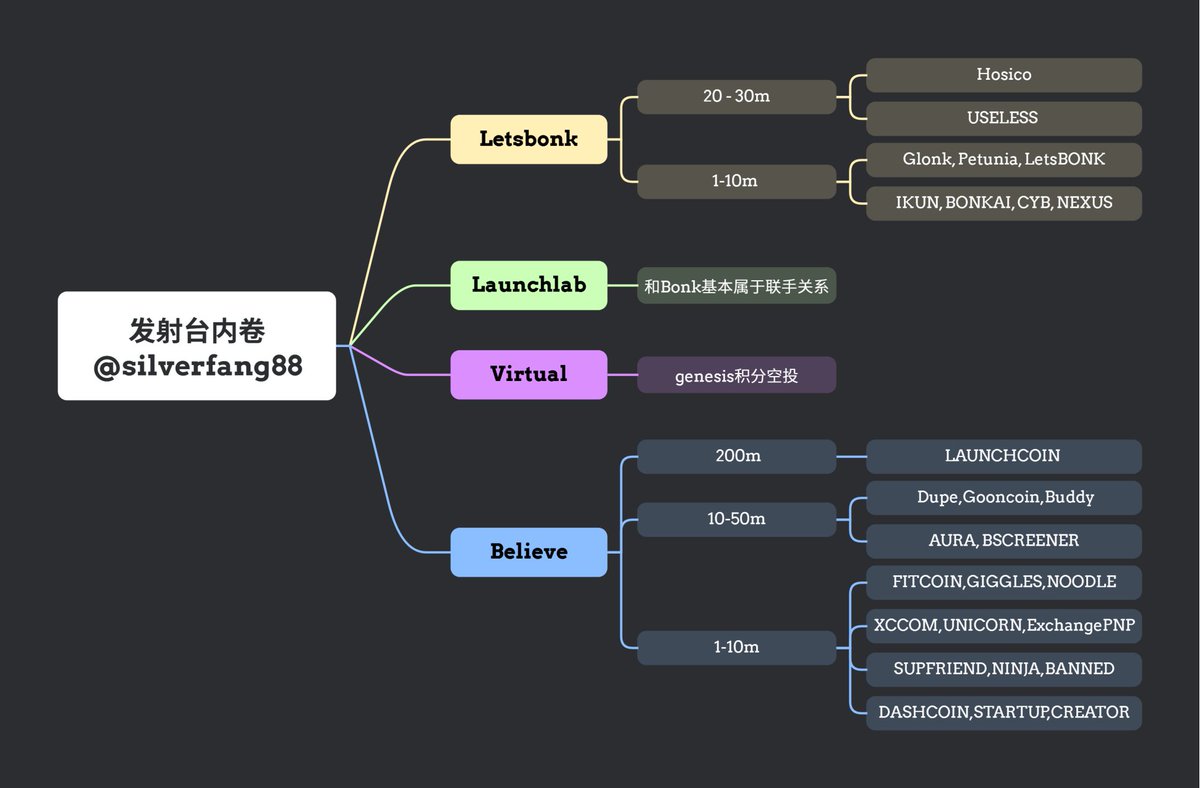
BONK
Cours du Bonk
$0,000023117
+$0,00000080700
(+3,61 %)
Évolution du cours sur les dernières 24 heures

Que ressentez-vous pour BONK aujourd’hui ?
Donnez votre avis en ajoutant un pouce vers le haut si vous pensez que le cours Ethereum et la valeur Ethereum sont en hausse, ou un pouce en bas si vous estimez que le prix Ethereum et le ETH / USD vont baisser. Suivez l’évolution Ethereum en temps réel et consultez le Ethereum cours dollar et le Ethereum cours euro pour anticiper les tendances du marché.
Votez pour voir les résultats
Risque de l’émetteur de BONK
Veuillez prendre toutes les précautions nécessaires et sachez que ce cryptoactif est classé comme étant à haut risque. Ce cryptoactif n’a pas d’émetteur clairement identifiable et/ou d’équipe de projet établie, ce qui augmente ou peut augmenter sa sensibilité à des risques de marché significatifs, y compris, mais sans s’y limiter, une volatilité extrême, une faible liquidité et/ou le potentiel d’abus de marché ou de manipulation du cours. Il n’existe pas de garantie absolue de la valeur, de la stabilité ou de la capacité à vendre ce cryptoactif à des cours préférés ou souhaités.
Avis de non-responsabilité
Le contenu social sur cette page (« Contenu »), y compris mais sans s’y limiter les tweets et les statistiques fournis par LunarCrush, est issu de tiers et fourni « tel quel » à des fins d’information uniquement. OKX ne garantit ni la qualité ni l’exactitude du Contenu, et le Contenu ne représente pas les opinions d’OKX. Il n’est pas destiné à dispenser (i) des conseils ou recommandations en matière d’investissement ; il ne doit pas (ii) non plus être considéré comme une invitation à acheter, à vendre ni à détenir des actifs numériques, ni (iii) comme des conseils financiers, comptables, juridiques ou fiscaux. Les actifs numériques (dont les stablecoins et les NFT) présentent un niveau de risque élevé, et leur valeur peut varier considérablement. Les cours et les performances des actifs numériques ne sont pas garantis et peuvent changer sans préavis.</br></br>OKX ne fournit aucune recommandation en matière d’investissement ou d’actif. Évaluez attentivement votre situation financière pour déterminer si vous êtes en mesure de détenir ou de trader des actifs numériques. Demandez conseil auprès de votre expert juridique, fiscal ou en investissement pour toute question portant sur votre situation personnelle. Pour plus de détails, consultez nos <a href="/help/terms-of-service">Conditions d’utilisation</a> et notre <a href="/help/risk-compliance-disclosure">Avertissement sur les risques</a>. En utilisant le site Web tiers (« SWT »), vous acceptez que toute utilisation du SWT soit soumise et régie par les conditions du SWT. Sauf mention écrite expresse, OKX et ses sociétés affiliées (« OKX ») ne sont en aucun cas associées au propriétaire ou à l’exploitant du SWT. Vous acceptez qu’OKX ne soit responsable d’aucune perte, d’aucun dommage et d’aucune autre conséquence découlant de votre utilisation du SWT. Sachez que l’utilisation d’un SWT peut déboucher sur la perte ou la baisse de vos actifs. Le produit peut être indisponible dans certaines juridictions.
Infos sur le marché du Bonk
Cap. boursière
La cap. boursière est calculée en multipliant l’offre en circulation d’un jeton par son dernier cours.
Cap. boursière = offre en circulation × dernier cours
Cap. boursière = offre en circulation × dernier cours
Approvisionnement en circulation
La quantité totale d’un jeton qui est accessible au public sur le marché.
Classement de cap. boursière
La position d’un jeton dans le classement par cap. boursière.
Sommet historique
Cours le plus élevé atteint par un jeton au cours de son historique de trading.
Minimum historique
Cours le plus bas atteint par un jeton au cours de son historique de trading.
Cap. boursière
$1,80B
Approvisionnement en circulation
77 419 592 329 437 BONK
87,16 % de
88 819 163 188 153 BONK
Classement de cap. boursière
46
Audits

Dernier audit : --
Pic sur 24 h
$0,000025385
Creux sur 24 h
$0,000021804
Sommet historique
$0,000060903
-62,05 % (-$0,00004)
Dernière mise à jour : 20 nov. 2024
Minimum historique
$0,0000080000
+188,96 % (+$0,000015117)
Dernière mise à jour : 8 janv. 2024
Flux de Bonk
Le contenu suivant provient de .

TylerD 🧙♂️
La minute du matin (5.14)
⏰Principales nouvelles :
-Les majors de la crypto sont en hausse de 1 à 4 %, l’ETH menant à 2 625 $
-Robinhood acquiert la société canadienne de crypto-monnaie WonderFi pour 180 millions de dollars
-Abraxas Capital Management achète ~500 millions de dollars d’ETH au cours de la semaine écoulée
-L’écosystème Launchcoin atteint une taille de 400 millions de dollars, voit 3,5 millions de dollars de frais quotidiens
-La propriété intellectuelle de CryptoPunks acquise par la Fondation Infinite Node pour un montant de 20 millions de dollars
🌎Macro Crypto et mèmes
-Les majors de la crypto sont dans le vert avec l’ETH en tête ; BTC +1 % à 103 900 $, ETH +4,5 % à 2 600 $, XRP +3 % à 2,61 $, SOL +4 % à 180 $
-RAY (+16 %), PI (+13 %), WAL (+11 %) et ENA (+11 %) ont été les principaux acteurs alternatifs
-L’ETF IBIT BTC de BlackRock a brisé sa série de 20 jours d’afflux, en restant stable lundi
-Tether a acheté 4 812 BTC (459 millions de dollars) pour alimenter la trésorerie de 21 Capital, la nouvelle société axée sur le bitcoin qui devrait entrer en bourse via une fusion SPAC avec Cantor Equity Partners
-Robinhood a acquis WonderFi pour 180 millions de dollars alors qu’il étend ses services de cryptomonnaie au Canada
-VanEck a lancé VBILL en tant que premier fonds de trésorerie tokenisé sur ETH, SOL et d’autres chaînes, tokenisé par Securitzie
-Solana a publié un article de 26 pages sur les actions tokenisées décrivant leur qualification unique pour être la blockchain de choix
Un porte-parole de Fidelity a prononcé un discours sur le bitcoin, demandant aux entreprises si elles remboursaient plus de 65 % de leur capital investi et si ce n’était pas le cas, leur disant d’acheter du bitcoin
-Abraxas Capital Management a acheté ~500 millions de dollars d’ETH au cours de la semaine écoulée
-Galaxy Digital a affiché une perte nette de 295 millions de dollars au premier trimestre, juste avant ses débuts prévus au Nasdaq
-La gouverneure de l’Arizona, Katie Hobbs, a opposé son veto à des projets de loi qui auraient élargi l’utilisation des actifs numériques par l’État, mais a signé une loi imposant une réglementation stricte sur les distributeurs automatiques de cryptomonnaies.
Dans les mèmes
Les leaders de Memecoin étaient verts ; DOGE +3 %, Shiba +3 %, PEPE +1 %, TRUMP +5 %, BONK +4 % et FARTCOIN +5 %
Launchcoin a de nouveau dominé le marché de Solana, l’écosystème global atteignant une capitalisation boursière de 400 millions de dollars, menée par LAUNCHCOIN atteignant 220 millions de dollars (+90 %)
GOONCOIN (+150 %), BSCREENER (+550 %) et AURA (+240 %) ont été d’autres acteurs notables de l’application Believe
💰 Token, Airdrop et suivi de protocole
-Le responsable des résumés, Luca Netz, a annoncé mardi un TGE Q4 pour $ABS
-L’application Believe a généré ~3,5 millions de dollars de frais ce jour-là, plus que Pump Fun
-Kaito a lancé son partenariat avec Virtuals, avec des yappers et des détenteurs de sKAITO qui jalonnent 5k+ KAITO éligibles pour gagner des points Virgen Virtuals
-Ethos a largué 256 NFT Ethos Validator à ses meilleurs contributeurs, qui ont ouvert à un étage de 2,5 ETH
-Hyperliquid a ajouté le trading au comptant de Fartcoin à sa plateforme
🤖 IA x Crypto
-La capitalisation boursière globale a bondi de 1 % à 11,4 milliards de dollars, les leaders étaient mitigés
-FARTCOIN (+5 %), VIRTUAL (-2 %), ai16z (-1 %), GOAT (-8 %) et AIXBT (même)
-SHOGGOTH (+50 %), VVAIFU (+30 %), BNKR (+30 %) et CLANKER (+25 %) ont été les plus performants
-Mindshare virtuel avec une part de 20 % ; Fartcoin et REKT sont les suivants
-Coinbase ajoute une messagerie cryptée permettant la communication avec l’agent d’IA pour son portefeuille Coinbase
🚚 Que se passe-t-il dans le domaine des NFT ?
-Les leaders NFT de l’ETH sont mélangés aux Punks en tête ; Punks +3 % à 47,5 ETH, Pudgy -5 % à 10,6, BAYC -3 % à 12,1 ETH
-Les chubbicorns (48 %) et les moncats (+20 %) ont été les principaux moteurs notables
-CryptoPunks a bondi à 48 ETH (128 000 $) après l’annonce de leur acquisition par la fondation The Infinite Node
-Les leaders NFT BTC étaient à nouveau très verts ; Taproot Wizards +5 % à 0.204 BTC, Bitcoin Puppets +3 %, NodeMonkes +6 %, OMB +21 %, Quantum Cats même
-Les NFT abstraits ont été mis en ligne sur OpenSea, ce qui a permis à la plupart des collections de bondir de 10 à 20 %.
-Refik Anadol a vendu son projet 'Biome Lumina' en 25 minutes, qui consistait en 1000 pièces à 5 000 $ la pop (5 millions de dollars de levée), maintenant à un étage de 3,15 ETH
-Les wearables Meebits ont été mis en ligne pour le minting sur OpenSea en partenariat avec PlayerZero
Afficher l’original



95,15 k
31

子时
<发射台内卷>
Le modèle politique de la pompe bonk+ray est formé
Il est clair que les forces au sein du SOL sont divisées
PUMP veut déménager le gâteau de Ray
provoqué une violente contre-attaque du groupe au sein du SOL
Mais la bouche ne peut pas tirer l’assiette
Il n’y a pas eu de robinet transparent
La plupart de l’argent provient de la vitesse du dragon
Believe est de retour après le pivot de projet de l’année dernière
Il y a clairement de l’argent derrière qui est prêt à parier
Compter sur de l’argent réel pour tirer l’épingle du jeu
Ryuichi Ryuji et d’autres articles sont clairement notés
Le virtuel ressemble à la logique alpha de Binance
L’effet de richesse du nouveau projet dans la partie involution
Bien que le projet de SOL soit basique
Il est difficile de lister Binance alpha/futures/spot
Cependant, il y a encore suffisamment de communautés à l’étranger et de groupes de spéculation sur les pièces de monnaie à SOL
Le flux naturel est assez important et la sensation corporelle est 10 à 20 fois supérieure à celle des personnes BSC
Bien que les projets de BSC soient très faciles à obtenir en alpha
Il est dommage que de nombreux articles ressemblent à des essais de proposition IELTS
C’est comme si vous faisiez face à la poésie du Seigneur Saint
Test de compréhension orale et écrite
Le nouveau système de richesse se détache de l’ensemble du CEX
Les papillons battent des ailes
Ce sont les échanges de deuxième niveau qui sont inconfortables
Meme n’en a plus besoin
Les pièces de capital-risque n’en ont plus besoin
Bonne nuit, Maka Baka
Afficher l’original
21,37 k
35

Carlos | Gambulls.com
Vous savez qu’ils sont OG quand ils se rallient derrière l’équipe $BONK.
Être proactif, offrir des récompenses et garder de l’argent dans l’écosystème est une bien meilleure équipe à soutenir qu’une équipe qui réagit et « doit » donner en retour ou tomber.
Les rues n’oublient pas les ventes de plusieurs millions de dollars sur Kraken.
Afficher l’original9,3 k
17
Calculateur BONK


Performance du cours de Bonk en USD
Le cours de Bonk est actuellement de $0,000023117. Au cours des dernières 24 heures, la valeur Bonk a a augmenté de +3,62 %. Il a actuellement une offre en circulation de 77 419 592 329 437 BONK et une offre maximale de 88 819 163 188 153 BONK, ce qui lui donne une capitalisation boursière totalement diluée de $1,80B. Actuellement, le jeton Bonk occupe la 46 position du classement par capitalisation boursière. Le cours Bonk/USD est mis à jour en temps réel.
Aujourd'hui
+$0,00000080700
+3,61 %
7 jours
+$0,0000062830
+37,32 %
30 jours
+$0,0000098270
+73,94 %
3 mois
+$0,0000056070
+32,02 %
Conversions de Bonk populaires
Dernière mise à jour : 14/05/2025 22:09
À propos du Bonk (BONK)
La notation fournie correspond à une notation agrégée qui est collectée par OKX à partir des sources fournies. Elle n’est indiquée qu’à titre indicatif. OKX ne garantit ni la qualité ni l’exactitude des notations. Elle n’est pas destinée à dispenser (i) des conseils ou recommandations en matière d’investissement ; elle ne doit pas (ii) non plus être considérée comme une invitation à acheter, à vendre ni à détenir des actifs numériques, ni (iii) comme des conseils financiers, comptables, juridiques ou fiscaux. Les actifs numériques (dont les stablecoins et les NFT) présentent un niveau de risque élevé ; leur valeur peut varier considérablement, voire devenir nulle. Les prix et les performances des actifs numériques ne sont pas garantis et peuvent changer sans préavis. Vos actifs numériques ne sont pas couverts par une assurance contre les pertes potentielles. Les rendements historiques ne constituent pas un indicateur des rendements futurs. OKX ne garantit aucun rendement, ni le remboursement du capital et des intérêts. Évaluez attentivement votre situation financière pour déterminer si vous êtes en mesure de détenir des actifs numériques ou de réaliser des activités de trading. Demandez conseil auprès de votre expert juridique/fiscal/en investissement pour toute question portant sur votre propre situation.
Afficher plus
- Site web officiel
- Livre blanc
- Explorateur de blocs
À propos des sites Web tiers
À propos des sites Web tiers
En utilisant le site web tiers (« SWT »), vous acceptez que toute utilisation du SWT soit sujette aux conditions du SWT et gouvernée par celles-ci. Sauf mention écrite expresse, OKX et ses affiliés (« OKX ») ne sont en aucun cas associés au propriétaire ni à l’opérateur du SWT. Vous acceptez le fait qu’OKX ne soit pas responsable des pertes, dommages ni de toutes autres conséquences découlant de votre utilisation du SWT. Veuillez noter que l’utilisation d’un SWT peut entraîner une perte ou une diminution de vos actifs.
FAQ Bonk
Combien vaut 1 Bonk aujourd’hui ?
Actuellement, 1 Bonk vaut $0,000023117. Vous recherchez des informations sur les mouvements de prix du token Bonk ? Vous êtes au bon endroit ! Découvrez les graphiques les plus récents sur le token Bonk et tradez de manière responsable avec OKX.
Qu'est-ce que la cryptomonnaie ?
Les cryptomonnaies, telles que les Bonk, sont des actifs numériques fonctionnant sur un registre public appelé blockchain. En savoir plus sur les jetons proposés sur OKX et leurs différents attributs, notamment le cours en direct et les graphiques en temps réel.
Quand la cryptomonnaie a-t-elle été inventée ?
En raison de la crise financière de 2008, l’intérêt porté à la finance décentralisée a explosé. Le Bitcoin offrait une solution novatrice en tant qu’actif numérique sécurisé sur un réseau décentralisé. De nombreux jetons tels que les Bonk ont également été créés depuis lors.
Le cours du Bonk va-t-il augmenter aujourd'hui ?
Consultez notre Page de prédiction des cours de Bonk pour prévoir les cours à venir et déterminer vos objectifs de cours.
Déclaration ESG
Les réglementations ESG (approche environnementale, sociale et de gouvernance) relatives aux actifs crypto visent à réduire leur impact environnemental (par exemple : l'extraction minière à forte intensité énergétique), à promouvoir la transparence et à garantir des pratiques de gouvernance éthiques afin d'aligner le secteur des cryptos sur des objectifs plus larges en matière de durabilité et de société. Ces réglementations encouragent le respect de normes qui atténuent les risques et favorisent la confiance dans les actifs numériques.
Détails de l’actif
Nom
OKcoin Europe LTD
Identifiant de l’entité juridique concernée
54930069NLWEIGLHXU42
Nom de l’actif crypto
Bonk
Mécanisme de consensus
Bonk is present on the following networks: base, binance_smart_chain, solana.
The consensus mechanism of the Base protocol, an Ethereum Layer 2 solution launched by Coinbase, utilizes Optimistic Rollups for scaling built on the Optimism software development kit (SDK). Key Components: 1. Optimistic Rollups: Assumption of Validity: Transactions are assumed valid by default and are processed off-chain. Instead of proving the validity of every transaction, the system assumes they are correct unless challenged. Fraud Proofs: If there is a suspicion of fraud, a challenge mechanism (fault proof) allows anyone to dispute the validity of a transaction within a specific time frame. If a transaction is found to be fraudulent, it is rolled back, and the dishonest actor is penalized. 2. Sequencer: Transaction Ordering: The sequencer is responsible for ordering transactions and creating batches to be processed off-chain. Block Production: It constructs and executes Layer 2 blocks, which are then submitted to Ethereum (Layer 1) for finality. State Updates: Provides transaction confirmations and state updates, ensuring the network's state remains consistent and accurate. 3. Interaction with Ethereum: On-Chain Contracts: Optimistic Rollups use smart contracts deployed on Ethereum to manage rollup blocks, monitor state updates, and track user deposits. Off-Chain Computation: Most computations and state storage occur off-chain, enhancing scalability and reducing fees. 4. Security and Decentralization: Modular OP Stack: Base is built on the open-source OP Stack from Optimism, which is designed to be highly modular and customizable. Commitment Posting: Periodically, the post-transaction state is committed to Ethereum, ensuring the security and integrity of the Layer 2 transactions. Censorship Resistance: The architecture provides censorship resistance equivalent to Ethereum, as it allows direct submission of transactions to the sequencer.
Binance Smart Chain (BSC) uses a hybrid consensus mechanism called Proof of Staked Authority (PoSA), which combines elements of Delegated Proof of Stake (DPoS) and Proof of Authority (PoA). This method ensures fast block times and low fees while maintaining a level of decentralization and security. Core Components 1. Validators (so-called “Cabinet Members”): Validators on BSC are responsible for producing new blocks, validating transactions, and maintaining the network’s security. To become a validator, an entity must stake a significant amount of BNB (Binance Coin). Validators are selected through staking and voting by token holders. There are 21 active validators at any given time, rotating to ensure decentralization and security. 2. Delegators: Token holders who do not wish to run validator nodes can delegate their BNB tokens to validators. This delegation helps validators increase their stake and improves their chances of being selected to produce blocks. Delegators earn a share of the rewards that validators receive, incentivizing broad participation in network security. 3. Candidates: Candidates are nodes that have staked the required amount of BNB and are in the pool waiting to become validators. They are essentially potential validators who are not currently active but can be elected to the validator set through community voting. Candidates play a crucial role in ensuring there is always a sufficient pool of nodes ready to take on validation tasks, thus maintaining network resilience and decentralization. Consensus Process 4. Validator Selection: Validators are chosen based on the amount of BNB staked and votes received from delegators. The more BNB staked and votes received, the higher the chance of being selected to validate transactions and produce new blocks. The selection process involves both the current validators and the pool of candidates, ensuring a dynamic and secure rotation of nodes. 5. Block Production: The selected validators take turns producing blocks in a PoA-like manner, ensuring that blocks are generated quickly and efficiently. Validators validate transactions, add them to new blocks, and broadcast these blocks to the network. 6. Transaction Finality: BSC achieves fast block times of around 3 seconds and quick transaction finality. This is achieved through the efficient PoSA mechanism that allows validators to rapidly reach consensus. Security and Economic Incentives 7. Staking: Validators are required to stake a substantial amount of BNB, which acts as collateral to ensure their honest behavior. This staked amount can be slashed if validators act maliciously. Staking incentivizes validators to act in the network's best interest to avoid losing their staked BNB. 8. Delegation and Rewards: Delegators earn rewards proportional to their stake in validators. This incentivizes them to choose reliable validators and participate in the network’s security. Validators and delegators share transaction fees as rewards, which provides continuous economic incentives to maintain network security and performance. 9. Transaction Fees: BSC employs low transaction fees, paid in BNB, making it cost-effective for users. These fees are collected by validators as part of their rewards, further incentivizing them to validate transactions accurately and efficiently.
Solana uses a unique combination of Proof of History (PoH) and Proof of Stake (PoS) to achieve high throughput, low latency, and robust security. Here’s a detailed explanation of how these mechanisms work: Core Concepts 1. Proof of History (PoH): Time-Stamped Transactions: PoH is a cryptographic technique that timestamps transactions, creating a historical record that proves that an event has occurred at a specific moment in time. Verifiable Delay Function: PoH uses a Verifiable Delay Function (VDF) to generate a unique hash that includes the transaction and the time it was processed. This sequence of hashes provides a verifiable order of events, enabling the network to efficiently agree on the sequence of transactions. 2. Proof of Stake (PoS): Validator Selection: Validators are chosen to produce new blocks based on the number of SOL tokens they have staked. The more tokens staked, the higher the chance of being selected to validate transactions and produce new blocks. Delegation: Token holders can delegate their SOL tokens to validators, earning rewards proportional to their stake while enhancing the network's security. Consensus Process 1. Transaction Validation: Transactions are broadcast to the network and collected by validators. Each transaction is validated to ensure it meets the network’s criteria, such as having correct signatures and sufficient funds. 2. PoH Sequence Generation: A validator generates a sequence of hashes using PoH, each containing a timestamp and the previous hash. This process creates a historical record of transactions, establishing a cryptographic clock for the network. 3. Block Production: The network uses PoS to select a leader validator based on their stake. The leader is responsible for bundling the validated transactions into a block. The leader validator uses the PoH sequence to order transactions within the block, ensuring that all transactions are processed in the correct order. 4. Consensus and Finalization: Other validators verify the block produced by the leader validator. They check the correctness of the PoH sequence and validate the transactions within the block. Once the block is verified, it is added to the blockchain. Validators sign off on the block, and it is considered finalized. Security and Economic Incentives 1. Incentives for Validators: Block Rewards: Validators earn rewards for producing and validating blocks. These rewards are distributed in SOL tokens and are proportional to the validator’s stake and performance. Transaction Fees: Validators also earn transaction fees from the transactions included in the blocks they produce. These fees provide an additional incentive for validators to process transactions efficiently. 2. Security: Staking: Validators must stake SOL tokens to participate in the consensus process. This staking acts as collateral, incentivizing validators to act honestly. If a validator behaves maliciously or fails to perform, they risk losing their staked tokens. Delegated Staking: Token holders can delegate their SOL tokens to validators, enhancing network security and decentralization. Delegators share in the rewards and are incentivized to choose reliable validators. 3. Economic Penalties: Slashing: Validators can be penalized for malicious behavior, such as double-signing or producing invalid blocks. This penalty, known as slashing, results in the loss of a portion of the staked tokens, discouraging dishonest actions.
Mécanismes d’incitation et frais applicables
Bonk is present on the following networks: base, binance_smart_chain, solana.
Base, an Ethereum Layer 2 scaling solution, uses a combination of economic incentives and security mechanisms to ensure the integrity and security of transactions. Base leverages Optimistic Rollups to enhance scalability while maintaining security. Incentive Mechanisms 1. Validators and Sequencers: Sequencers: In Base, sequencers are responsible for ordering transactions and creating batches that are processed off-chain. They play a crucial role in maintaining network efficiency and throughput. Validator Rewards: Validators earn rewards for participating in the consensus process. These rewards can include transaction fees and additional protocol incentives. 2. Economic Incentives: Transaction Fees: Sequencers earn transaction fees from users who want their transactions processed. These fees incentivize sequencers to operate honestly and efficiently. Challenge Rewards: Users who successfully challenge invalid transactions by submitting fraud proofs are rewarded. This mechanism encourages the community to actively monitor and ensure the correctness of transactions. 3. Penalties for Malicious Behavior: Economic Penalties: Validators or sequencers that act maliciously, such as including invalid transactions, face economic penalties. These penalties can include forfeiture of staked tokens or other forms of economic loss. Fraud Proofs: If a transaction is challenged and found to be invalid, the dishonest party (sequencer) faces penalties, and the state is reverted. This discourages malicious behavior and ensures network integrity. Fees Applicable on the Base Blockchain Protocol 1. Transaction Fees: Layer 2 Transaction Fees: Users pay fees for transactions processed on the Layer 2 network. These fees are typically lower than those on the Ethereum mainnet due to the reduced computational load on the main chain. Cost Efficiency: By aggregating multiple transactions into a single batch, Base reduces the overall cost per transaction, making it more economical for users. 2. L1 Data Fees: Posting Batches to Ethereum: Periodically, state updates from Layer 2 transactions are posted to the Ethereum mainnet as calldata. This involves a fee, known as the L1 data fee, which covers the gas cost of publishing these state updates on Ethereum. Cost Sharing: The fixed costs of posting state updates to Ethereum are spread across multiple transactions within a batch, reducing the cost burden on individual transactions. 3. Smart Contract Fees: Execution Costs: Fees for deploying and interacting with smart contracts on Base are based on the computational resources required. This ensures that users are charged proportionally for the resources they consume.
Binance Smart Chain (BSC) uses the Proof of Staked Authority (PoSA) consensus mechanism to ensure network security and incentivize participation from validators and delegators. Incentive Mechanisms 1. Validators: Staking Rewards: Validators must stake a significant amount of BNB to participate in the consensus process. They earn rewards in the form of transaction fees and block rewards. Selection Process: Validators are selected based on the amount of BNB staked and the votes received from delegators. The more BNB staked and votes received, the higher the chances of being selected to validate transactions and produce new blocks. 2. Delegators: Delegated Staking: Token holders can delegate their BNB to validators. This delegation increases the validator's total stake and improves their chances of being selected to produce blocks. Shared Rewards: Delegators earn a portion of the rewards that validators receive. This incentivizes token holders to participate in the network’s security and decentralization by choosing reliable validators. 3. Candidates: Pool of Potential Validators: Candidates are nodes that have staked the required amount of BNB and are waiting to become active validators. They ensure that there is always a sufficient pool of nodes ready to take on validation tasks, maintaining network resilience. 4. Economic Security: Slashing: Validators can be penalized for malicious behavior or failure to perform their duties. Penalties include slashing a portion of their staked tokens, ensuring that validators act in the best interest of the network. Opportunity Cost: Staking requires validators and delegators to lock up their BNB tokens, providing an economic incentive to act honestly to avoid losing their staked assets. Fees on the Binance Smart Chain 5. Transaction Fees: Low Fees: BSC is known for its low transaction fees compared to other blockchain networks. These fees are paid in BNB and are essential for maintaining network operations and compensating validators. Dynamic Fee Structure: Transaction fees can vary based on network congestion and the complexity of the transactions. However, BSC ensures that fees remain significantly lower than those on the Ethereum mainnet. 6. Block Rewards: Incentivizing Validators: Validators earn block rewards in addition to transaction fees. These rewards are distributed to validators for their role in maintaining the network and processing transactions. 7. Cross-Chain Fees: Interoperability Costs: BSC supports cross-chain compatibility, allowing assets to be transferred between Binance Chain and Binance Smart Chain. These cross-chain operations incur minimal fees, facilitating seamless asset transfers and improving user experience. 8. Smart Contract Fees: Deployment and Execution Costs: Deploying and interacting with smart contracts on BSC involves paying fees based on the computational resources required. These fees are also paid in BNB and are designed to be cost-effective, encouraging developers to build on the BSC platform.
Solana uses a combination of Proof of History (PoH) and Proof of Stake (PoS) to secure its network and validate transactions. Here’s a detailed explanation of the incentive mechanisms and applicable fees: Incentive Mechanisms 4. Validators: Staking Rewards: Validators are chosen based on the number of SOL tokens they have staked. They earn rewards for producing and validating blocks, which are distributed in SOL. The more tokens staked, the higher the chances of being selected to validate transactions and produce new blocks. Transaction Fees: Validators earn a portion of the transaction fees paid by users for the transactions they include in the blocks. This provides an additional financial incentive for validators to process transactions efficiently and maintain the network's integrity. 5. Delegators: Delegated Staking: Token holders who do not wish to run a validator node can delegate their SOL tokens to a validator. In return, delegators share in the rewards earned by the validators. This encourages widespread participation in securing the network and ensures decentralization. 6. Economic Security: Slashing: Validators can be penalized for malicious behavior, such as producing invalid blocks or being frequently offline. This penalty, known as slashing, involves the loss of a portion of their staked tokens. Slashing deters dishonest actions and ensures that validators act in the best interest of the network. Opportunity Cost: By staking SOL tokens, validators and delegators lock up their tokens, which could otherwise be used or sold. This opportunity cost incentivizes participants to act honestly to earn rewards and avoid penalties. Fees Applicable on the Solana Blockchain 7. Transaction Fees: Low and Predictable Fees: Solana is designed to handle a high throughput of transactions, which helps keep fees low and predictable. The average transaction fee on Solana is significantly lower compared to other blockchains like Ethereum. Fee Structure: Fees are paid in SOL and are used to compensate validators for the resources they expend to process transactions. This includes computational power and network bandwidth. 8. Rent Fees: State Storage: Solana charges rent fees for storing data on the blockchain. These fees are designed to discourage inefficient use of state storage and encourage developers to clean up unused state. Rent fees help maintain the efficiency and performance of the network. 9. Smart Contract Fees: Execution Costs: Similar to transaction fees, fees for deploying and interacting with smart contracts on Solana are based on the computational resources required. This ensures that users are charged proportionally for the resources they consume.
Début de la période à laquelle se rapporte la déclaration
2024-04-20
Fin de la période à laquelle se rapporte la déclaration
2025-04-20
Rapport sur l'énergie
Consommation énergétique
1592.26460 (kWh/a)
Sources de consommation d’énergie et méthodologies
The energy consumption of this asset is aggregated across multiple components:
To determine the energy consumption of a token, the energy consumption of the network(s) base, binance_smart_chain, solana is calculated first. Based on the crypto asset's gas consumption per network, the share of the total consumption of the respective network that is assigned to this asset is defined. When calculating the energy consumption, we used - if available - the Functionally Fungible Group Digital Token Identifier (FFG DTI) to determine all implementations of the asset of question in scope and we update the mappings regulary, based on data of the Digital Token Identifier Foundation.
Calculateur BONK


















Données sociales